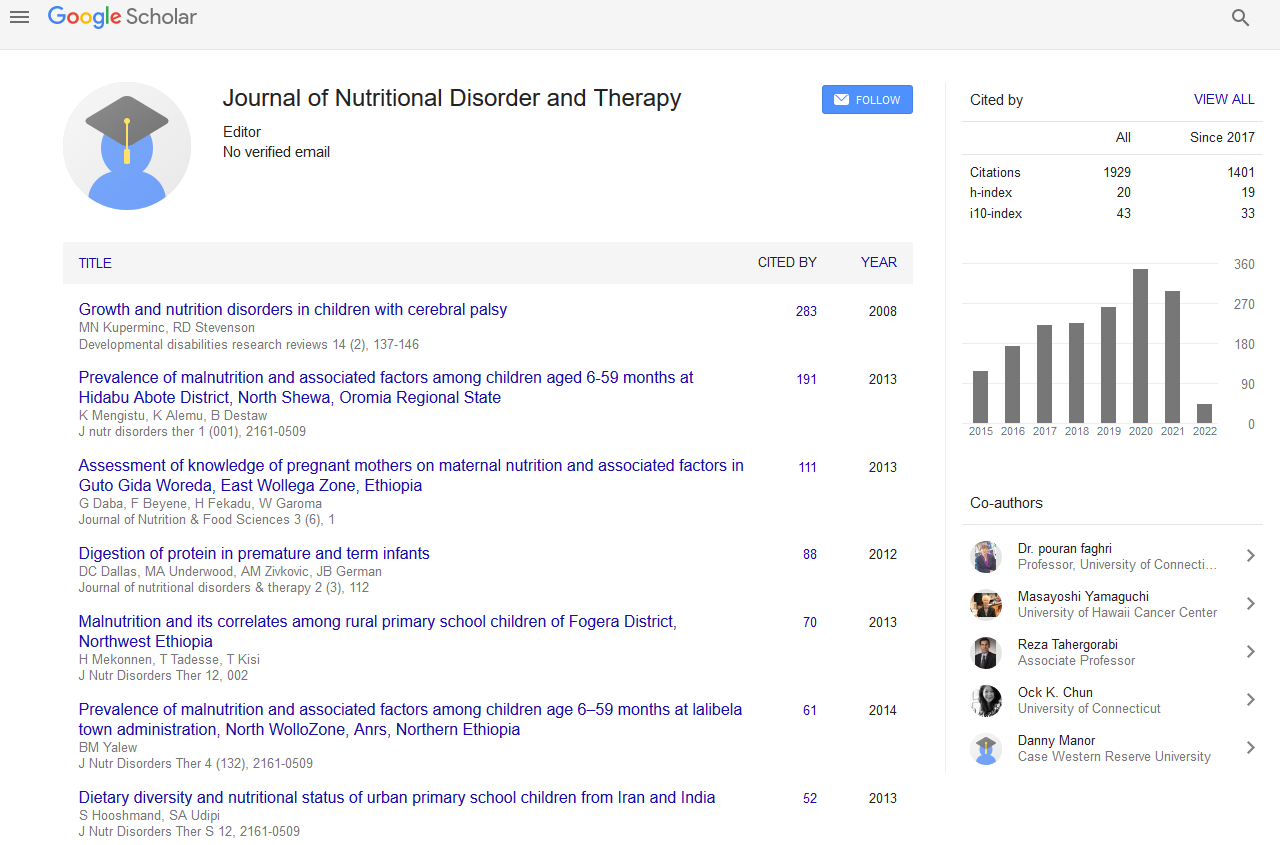Indexed In
- Open J Gate
- Genamics JournalSeek
- Academic Keys
- JournalTOCs
- Ulrich's Periodicals Directory
- RefSeek
- Hamdard University
- EBSCO A-Z
- OCLC- WorldCat
- Publons
- Geneva Foundation for Medical Education and Research
- Euro Pub
Useful Links
Share This Page
Journal Flyer

Open Access Journals
- Agri and Aquaculture
- Biochemistry
- Bioinformatics & Systems Biology
- Business & Management
- Chemistry
- Clinical Sciences
- Engineering
- Food & Nutrition
- General Science
- Genetics & Molecular Biology
- Immunology & Microbiology
- Medical Sciences
- Neuroscience & Psychology
- Nursing & Health Care
- Pharmaceutical Sciences
The quality of pasta added with cardoon inulin: Evaluation of the environment of cultivation
JOINT EVENT: 13th International Congress on Advances in Natural Medicines Nutraceuticals & Neurocognition & 14th International Conference on Clinical Nutrition
July 27-29, 2017 Rome, Italy
Carla Sillitti, Lucia Padalino, Piero Calderaro, Antonella Pagliaro, Amalia Conte, Matteo A Del Nobile, Salvatore A Raccuia, Cristina Costa, Salvatore Scandurra and Maria Grazia Melilli
CNR-ISAFOM, Italy
University of Foggia, Italy
Posters & Accepted Abstracts: J Nutr Disorders Ther
Abstract:
Statement of the Problem: Inulin is a fructose polymer with prebiotic and dietary fiber functions, found naturally in various plants including cardoon roots (Cynara cardunculus L.). The cardoon plant belongs to Asteracaean family and it is native of the Mediterranean area. Its degree of polymerization (DP) varies in relation to the growing environment and phenological stage of the plant and it may affect the quality characteristics of foods when it is added. The aim of the study was to evaluate the quality of whole meal pastas with the addition of inulin with high DP, extracted from cardoon plants grown in two different environments. Methodology & Theoretical Orientation: The plants of cardoon were collected in two Sicilian growing environments, Assoro (AS) and Barrafranca (BR), in the internal hilly area of Sicily. Inulin was extracted from cardoon roots (genotype "CDL") and added to 4% (w/w) to the semolina cv. "Russello" to obtain pastas (spaghetti). Pasta without inulin was used as control. The pastas obtained were evaluated for: color (Minolta colorimeter CR, 400), cooking time (minutes), cooking quality, loss of inulin (HPAEC-PAD, Thermofisher) in cooking and sensory qualities (Panel test). Findings: The highest DP (~80 units for AS and ~60 for BR), has improved the parameters of the color of the pastas, especially the L* value compared to the control. On the contrary, the overall quality not being conditioned by the DP, is positively influenced by the addition of inulin (6.8) compared to control (5.9). Conclusion & Significance: Considering that the quality parameters of the spaghetti improved, thanks to the addition of high DP inulin which did not get influenced by the environment of Cynara cultivation, it is possible to hypothesize the use of internal marginal area of Sicily for inulin production from cardoon roots.
Biography :
Carla Sillitti is a PhD student of the University of Foggia. She is carrying out her PhD work in collaboration with CNR-ISAFOM in Catania. She has completed her Master’s in Health Biology. She is developing a project to produce new nutraceutical food, a type of pasta, based on the use of ancient Sicilian whole meal and inulin. Many studies were carried out to define the best type of semolina and inulin to be added. She is interested in nutraceutical food and food quality, as well as nutrition and human health.


